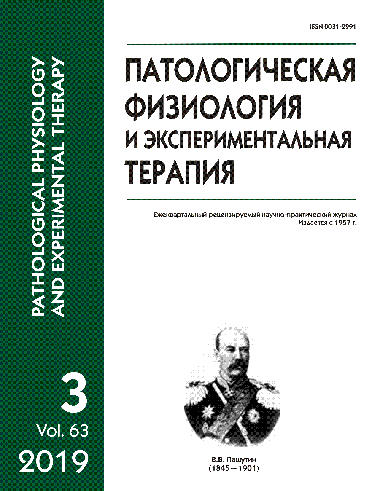Efficacy of the β₂-adrenergic agonist formoterol in compensation of electrophysiological manifestations of steroid myopathy in animal experiments
Abstract
Aim. To study efficacy of β2-adrenergic agonist formoterol (F) in compensation of electrophysiological disorders in mixed-type skeletal muscles (m. tibial anterior) induced by long-term dexamethasone (D) treatment. Methods. Experiments were performed on sexually mature female rats (180-210 g) divided into four groups: 1) control, group C (intact rats, n=10); 2) first experimental group, 30D (30-day dexamethasone treatment, n=10); 3) second experimental group, 30D+F (30-day dexamethasone plus formoterol treatment, n=10); and third experimental group, 30F (30-day formoterol treatment, n=10). Dexamethasone (KRKA, Slovenia) was administered every two days, i.p., at a dose of 0.25 mg/kg, which was equivalent to the clinical therapeutic dose. Formoterol (Foradil, Novartis, Switzerland) was administered daily at a dose of 1.5 µ/kg, s.c. On day 30, rats were anesthetized with sodium thiopental (100 mg/kg), and stimulation electromyography was performed in an acute experiment. The anterior tibial muscle was stimulated with suprathreshold electrical current via the fibular nerve, and electrophysiological parameters of the muscle were recorded. Results. Formoterol in combination with dexamethasone prevented the decrease in the number of activated muscle motor units and the prolongation of M-response latency, which were typical for the 30D group. Also, formoterol not only corrected the decreased M-response amplitude but even significantly increased it in the 30D+F group by 115% compared to the control (p<0.05). At the same time, formoterol in combination with dexamethasone did not prevent the emergence of polyphasic M-responses (as observed in 50% of animals in the 30D+F group and 40% of animals in the 30D group) but compensated for the decrease in their amplitude. Administration of F+D reduced the incidence of less reliable synaptic transmission (up to 30% in the 30D+F group vs. 70% in the 30D group) but did not completely prevent it. Formoterol administered together with dexamethasone did not prevent marked facilitation of synaptic transmission in 50% of rats at the optimal neuromuscular stimulation rate (30 imp/s). However, this combination increased the amplitude of the first M-response in a series, which indicated the absence of blocked synapses in the 30D+F group. Formoterol in combination with dexamethasone prevented the typical for D-group disorder of M-response, which was more pronounced than in control, and the decrease in the number of activated muscle motor units after performing a fatigable work. At the same time, the D+F treatment increased the M-response latency after performing the fatigable work, which was typical for the 30D group but was not characteristic of the control. This fact confirmed a lower reliability of synaptic transmission both in 30D and 30D+F groups. Conclusion. The study demonstrated a high efficacy of the β2-adrenergic agonist formoterol for preventing electrophysiological disorders in the muscle induced by long-term administration of dexamethasone, which indicated myopathic alterations. At the same time, formoterol in combination with dexamethasone, although reduced the incidence of low-reliability synaptic transmission (up to 30% vs. 70% in the group receiving dexamethasone alone), did not completely prevent this manifestation of steroid myopathy.






